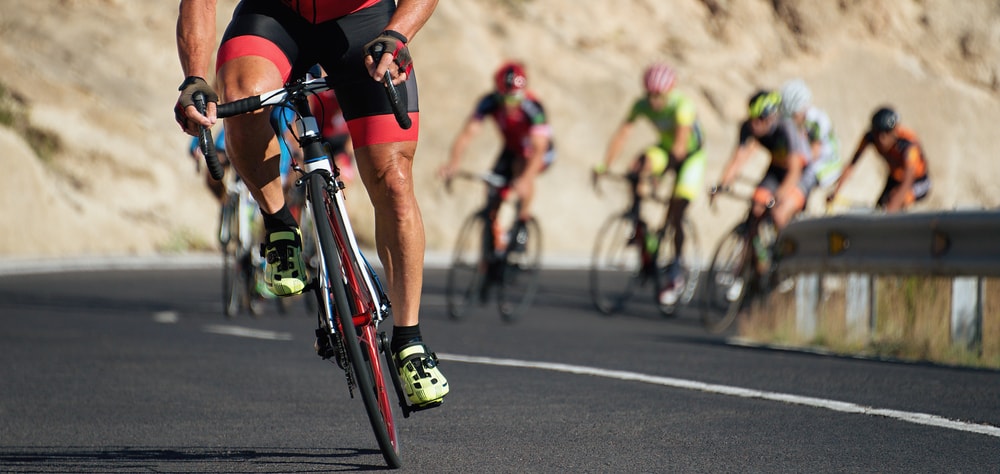
The Secret To Successful Stock Investing
This post may contain links from our sponsors. We provide you with accurate, reliable information. Learn more about how we make money and select our advertising partners.
Despite the science, there's a better way to become a successful investor. How so? Those who make the best investment decisions are the “slow and steady” within the race.
Today's Classic is republished from White Coat Investor. You can see the original here. Enjoy!
The Secret to Successful Stock Investing
STAY IN THE PELETON!
Let me tell you what I mean. Stock investing is a lot like a flat stage in a multi-stage cycling race. A stage race is a race stretched over multiple days where the racers ride for 4-6 hours a day over the course of many days. The longest stage races in the world, or The Grand Tours, are the Tour of Italy, the Tour of France, and the Tour of Spain, which last for three weeks at a time.
There are much shorter stage races, including the toughest stage race in America which is running as I write this, the Tour of Utah. This stage race is stretched out over seven days. However, after three stages and 400 miles of this race, the top 43 guys in the race are separated by just 17 seconds. There’s an important lesson to learn there for stock market investors. The lesson is to stay in the peloton.
Experienced racers and fans know that stage races are not won on flat stages. They are won in the time trial stages (where each racer rides alone against the clock) and on the mountaintop finishes (where a racer’s fitness and skill allow him to leave his peers behind.) The reason for this is simply a case of aerodynamics.
Aerodynamics doesn’t affect you much as you tool around your neighborhood on your mountain bike at 5 or 10 miles an hour. But traveling at 30 or 35 mph in a professional bike race is a completely different scenario. In TV interviews, cyclists always talk about the “work” and “suffering” they and their team did that day.
In cycling, those words are euphemisms for fighting the wind. It takes 20-40% more energy to ride in the front than it does to tuck yourself in behind another rider, or better yet, in the middle of a big group of riders. Those in front are “suffering” while those in the pack behind are cruising along enjoying a nice day. The main pack of riders in a race is called “the peloton,” a French word meaning pellet, platoon, or little ball.
On a flat stage with calm winds, it is relatively easy to sit in the middle of the peloton all day, save your energy, and finish about the same time as everyone else in the race. Sitting in the peloton is like index investing, you’re just accepting the market return. You get the same time as everyone else, but you work a whole lot less.
How a Flat State Works
The typical scenario in a flat stage is that at the beginning, 20 or 30 racers are at the front, trying to get into “the break.”
Finally, after 30 miles or so, the break is established, and a group of 2-10 riders is out in front of the peloton. That group works their butt off for the next 5 hours trying to stay ahead of the peloton, which is never really further behind than 2-5 minutes. Then, in the closing miles of the stage, the “sprinters’ teams,” get on the front of the peloton, ramp up the pace, and reel in the break.
By the last couple of miles, the pack is all back together and the sprinters’ teams work hard to get their best racer into position to win the race by less than a second. Meanwhile, in the overall results for the race, everyone who stayed in the peloton all day gets the exact same time as the guys in the break, the sprinters’ teams, and even the stage winner himself.
In Investing, There Is No True Glory In “The Break”
The “break” is a lot like individual investors who are picking stocks. They bust their butts, give it their all, and perhaps receive some temporary glory (of which they can brag at cocktail parties), but in the end, are often not only caught by the peloton but passed by it when they run out of gas. The sprinters and their teams are a lot like the teams of actively managed mutual funds.
They’re a little more scientific in their process, and they often achieve glory in the form of stage wins (which are meaningless in the overall race), but at the end of the day, even the successful ones get the same time as everyone else despite spending a lot more energy (and money) doing so. Sprinters are also often the ones who get dropped from the peloton first when the road tilts uphill, not dissimilar from high-flying active fund managers whose style goes out of favor with the market.
How To Win A Stage Race or Be A Successful Investor
The successful investors in the race are the “GC guys.” GC stands for General Classification, the overall winner of the race. In a flat stage, they simply bide their time.
They sit in the peloton, surrounded by their team, and stay fresh, knowing that nothing anyone does today (other than wipe out) really matters at all to the end result of the overall race. They’re free to save their energy for pursuits where it will actually do them some good. The best riders in the race simply accept the market (peloton) return and keep their (energy) costs as low as possible.
There are times in the race that actually matter to the GC guys, of course. For a few minutes at the end of a mountaintop stage, and for the 45 minutes or an hour in the course of three weeks where they are time trialing, their skill, knowledge, and luck play a huge part.
If we stretch this cycling analogy almost to the point of breaking, we can consider the little things an investor does on the side, such as using retirement accounts wisely, minimizing her taxes, or perhaps investing in a relatively inefficient market such as real estate.
Staying in the peloton won’t help you in these relatively rare instances, but with regards to investing in stocks, just stay in the peloton and arrive at your destination in record time with minimal effort.
What do you think? In what areas of your personal finance and investing life do you feel like your skills can really add value and when should you “stay in the peloton?”

Disclaimer: The topic presented in this article is provided as general information and for educational purposes. It is not a substitute for professional advice. Accordingly, before taking action, consult with your team of professionals.

